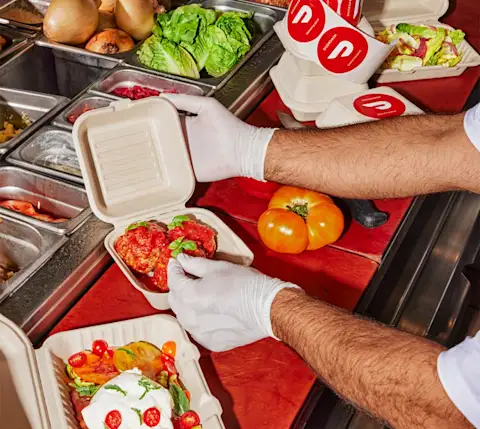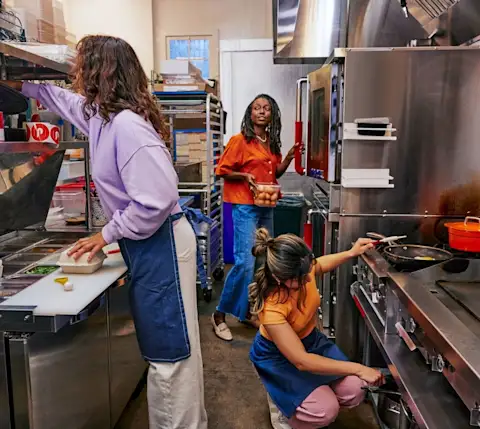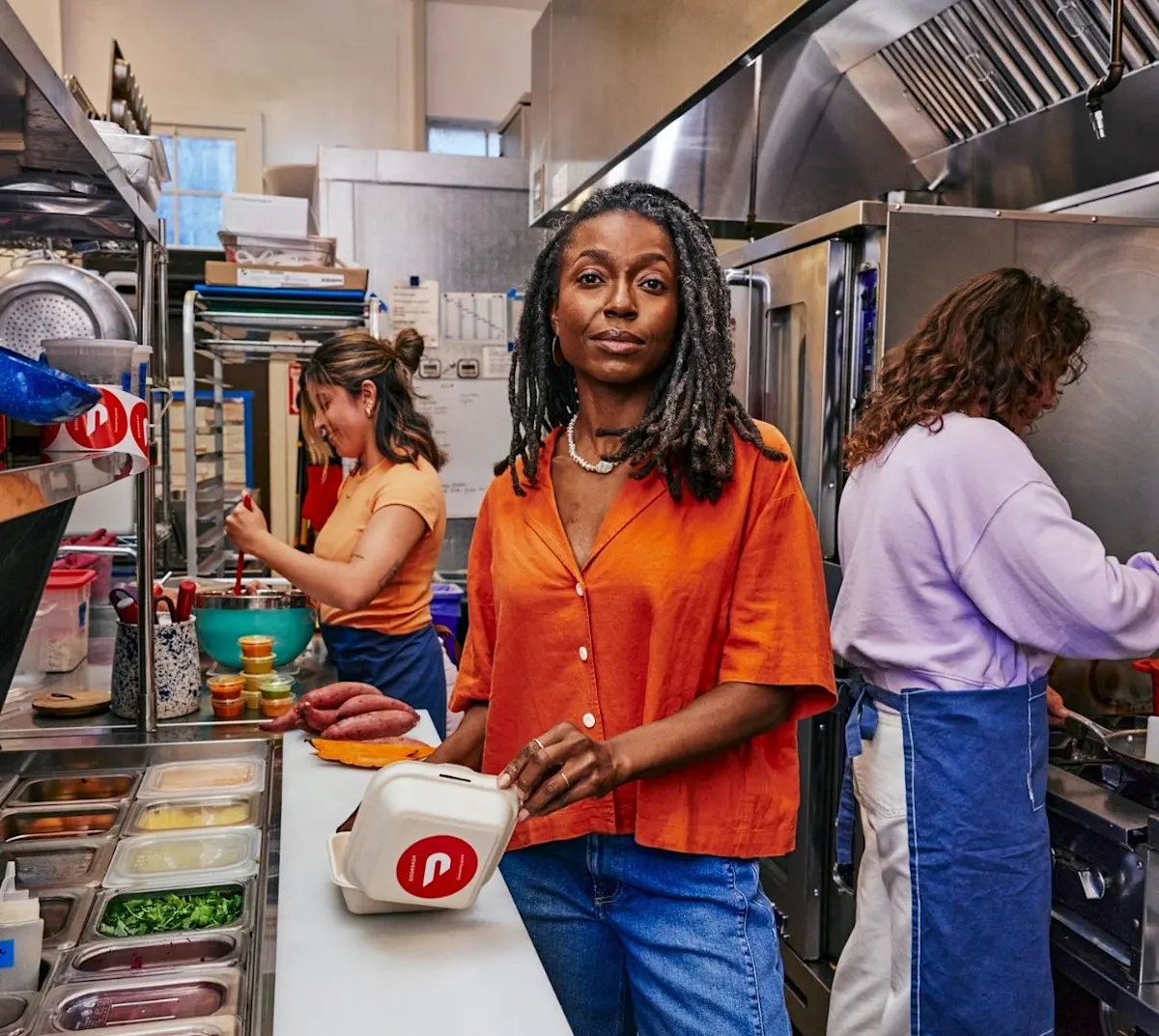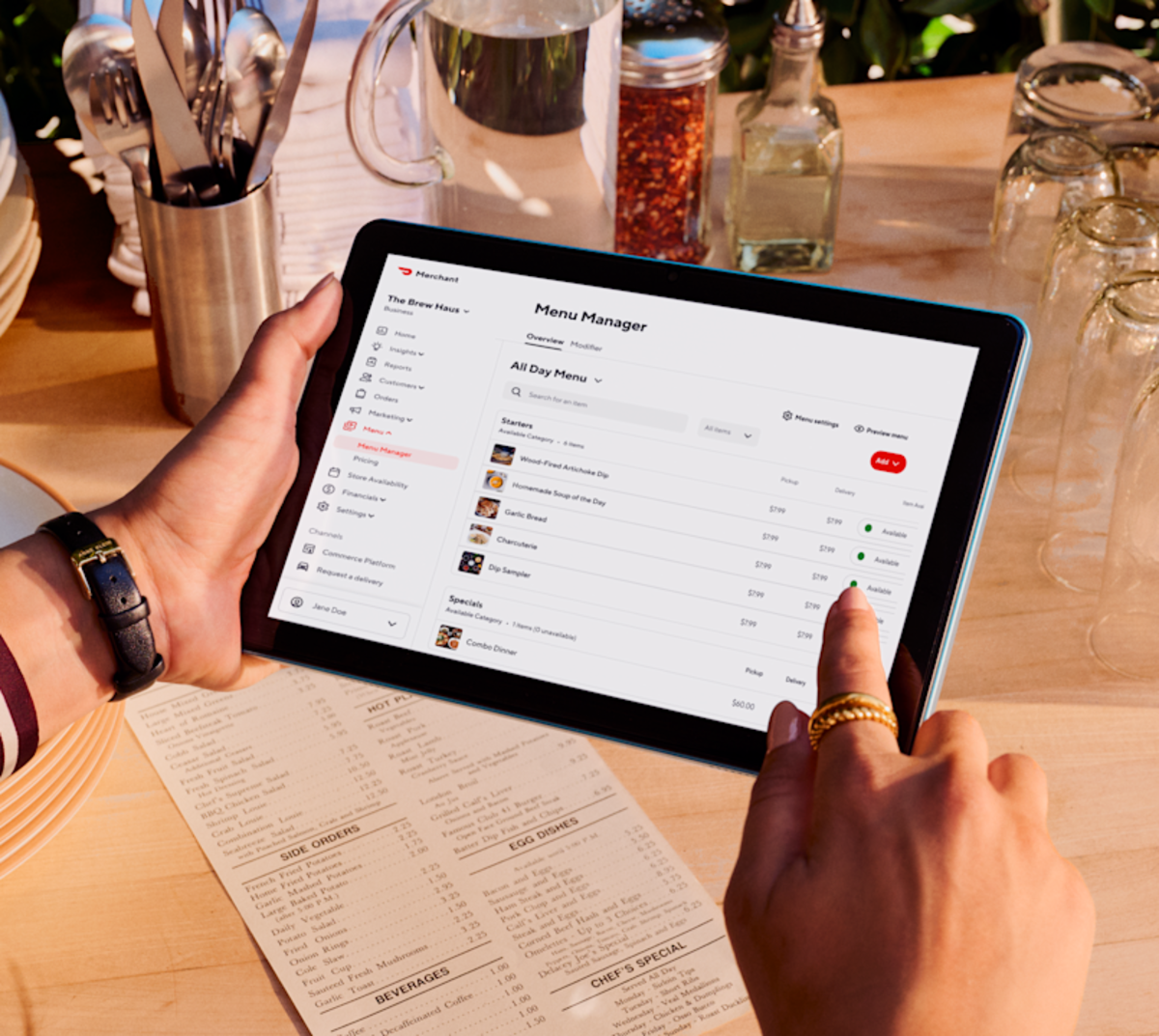Sustainability is no longer a trend in the restaurant industry — it's now standard practice. According to Sodexo's Sustainable Food Barometer, 72% of US respondents plan to eat more sustainable food. There's a prevailing myth that responsible practices cost restaurant owners more than they're worth. But as consumers expect more responsible practices, restaurants can reduce costs, minimize their environmental impact, and attract new customers with low-waste kitchens that benefit the planet and the bottom line. Here's how.
What is a low-waste kitchen and why does it matter?
A low-waste kitchen focuses on reducing waste in food and packaging. Low-waste kitchens may use minimal-waste packaging, repurpose food scraps, or maximize ingredients by using every part of the animal or vegetable. From healthy restaurants using local ingredients to reduce spoilage to your favorite takeout place using sustainable containers to deliver your lunch, this approach rethinks each stage of the food production process to minimize waste and promote eco-conscious dining.
Whereas low-waste restaurants aim to lower the amount of waste they produce, zero-waste restaurants strive to eliminate it completely. Restaurants that adopt a low- or zero-waste model reap the economic and environmental benefits, including:
Lower food costs: Restaurants can save money by minimizing waste, making the most of every ingredient, and reducing over-ordering.
Improved efficiency: Streamlining operations and maximizing inventory leads to better use of staff time and kitchen resources.
Less waste: By cutting down on food scraps and single-use packaging, restaurants contribute to less landfill waste.
Lower carbon emissions: Sustainable practices like sourcing local ingredients reduce emissions associated with transportation.
Here are more tips to make your restaurant sustainable and cost-effective.
How to reduce food waste in restaurants
Here are some actionable tips you can take to help reduce food waste in your restaurant:
Optimize your inventory
It first helps to know how much food waste your restaurant generates before determining how best to manage inventory. For example, does most waste come from food prep, spoilage, or leftovers? Tools like inventory tracking software and regular stock audits can help control supplies. Regularly reviewing inventory data also allows restaurants to analyze trends and adjust purchasing habits. For example, if certain ingredients consistently go unused, consider reducing the order quantities or removing the item from the menu altogether.
Make the most of your ingredients
Getting creative with leftovers can help lower costs and reduce waste without sacrificing flavor or ingenuity. The Las Vegas restaurant Sparrow + Wolf uses the same ingredients between the kitchen and the bar. At New York's Le Crocodile, Chef Aidan O'Neal turns the scraps of the apple cubes from his Waldorf salad into apple cake he serves at breakfast.
Incorporating a circular system — or upcycling food scraps — can help reduce costs and waste. Check out our guide to reducing food waste in your restaurant so you can save money and drive customer loyalty.
Train your staff
As you implement waste reduction efforts, train your staff to ensure they're up to date on your restaurant's sustainability practices. That includes menu changes, cooking techniques, or proper storage practices.
Staff training should also include strategies for reducing mistakes during food preparation and service. For instance, clarifying orders with customers and double-checking dietary restrictions can prevent unnecessary food waste. Employees who understand the importance of sustainability are more likely to contribute positively to the restaurant's goals.

The business benefits of restaurant sustainability practices
Sustainability isn't just an ethical choice for restaurants, but can be a profitable one. In fact, Millennial and Gen Z consumers are willing to spend an average premium of 20 percent for sustainable meals.
Here are the key indicators consumers look for to identify low-waste kitchens:
Sustainable packaging: Use reusable or eco-conscious takeout containers.
Menu transparency: Add information about the ingredients, source, and environmental impact on your menus.
Partnerships with local suppliers: Source ingredients or non-food products from local vendors and suppliers, including fresh produce and organic meats from your nearby farmer or butcher.
Reducing overhead costs
Restaurant sustainability practices can lead to significant cost savings. Optimizing inventory management reduces the likelihood of spoilage and over-ordering while repurposing food scraps ensures you use every ingredient to its fullest potential. These practices not only lower food costs but also enhance operational efficiency.
Minimizing food waste
Wasting less means saving more. Efficient inventory management and creative menu planning mean utilizing your ingredients effectively and adjusting your portion sizes. Purchasing ingredients in bulk and sourcing locally also reduces your packaging and transportation costs — meaning fresher food for less. Replacing single-use items with reusable alternatives also lowers recurring expenses.
Improving operational efficiency
Streamlining operations to reduce waste leads to a more efficient kitchen. For example, training staff on proper portioning, storage techniques, and waste reduction strategies can improve overall workflow. Efficient kitchens save time, resources, and labor costs for a smoother operation.
These practices help diners recognize low-waste kitchens which helps differentiate your restaurant from competitors. Check out more tips to make your restaurant sustainable.

How to reduce food waste in delivery orders
As your business uses third-party delivery services like DoorDash, they are looking for ways to shrink their carbon footprint and costs. Here's how restaurants can reduce waste in delivery orders:
1. Avoid single-use plastics
Replace plastic utensils, straws, and containers with biodegradable or reusable alternatives. Offering these items only upon request can also significantly cut waste. Many diners prefer the option to decline these items, especially if they're eating at home and already have utensils available.
2. Use eco-friendly packaging
Switch to compostable or recyclable packaging materials — just as the Chicago restaurant Daisies did when it announced last year that it was no longer using plastic wrap. Consider these plastic alternatives:
Reusable packaging
Recycled materials (known as post-consumer recycled content)
Compostable packaging
Ethically sourced bioplastics
Make your restaurant more efficient and profitable by reducing waste
Transitioning to a waste-free kitchen won't happen overnight, but every step counts. By optimizing inventory, recycling and composting, and using sustainable takeout containers, you can create a more efficient operation that reduces food waste and reaches modern diners.
Check out our guide to sustainable food delivery containers to learn more about creating a low-waste kitchen.



